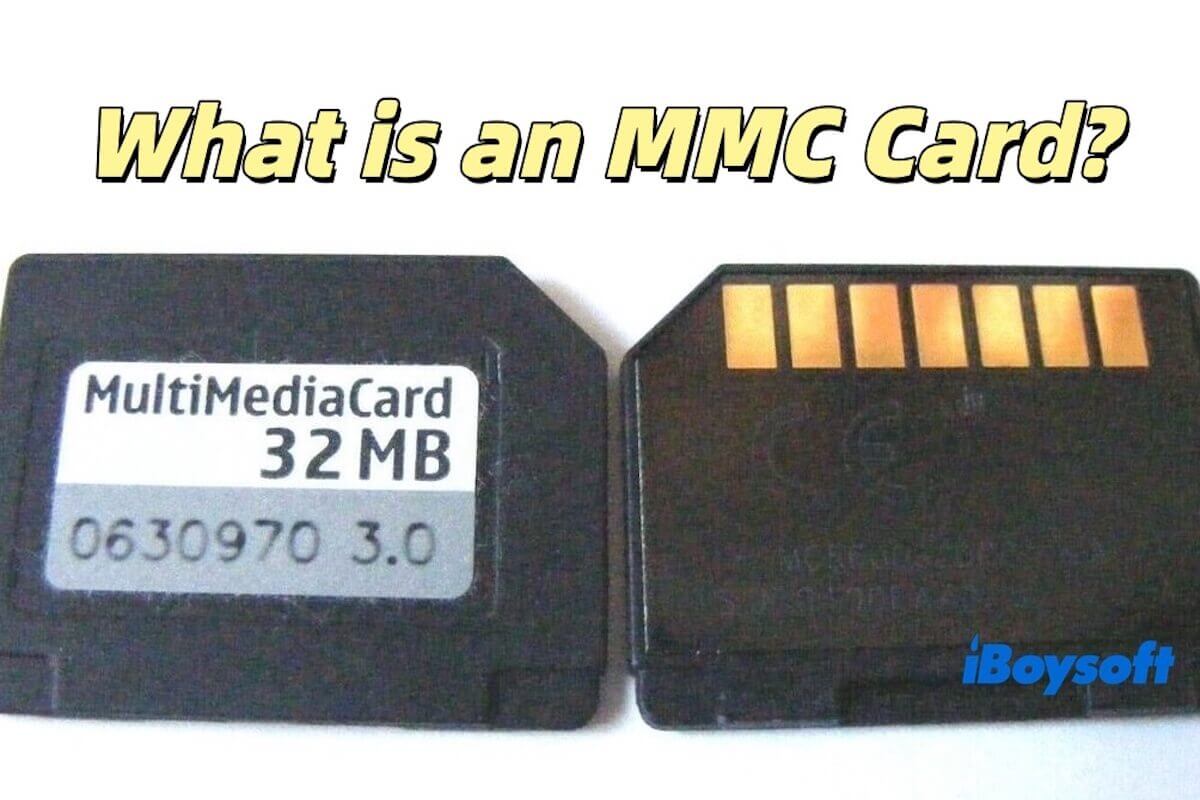The MMC card (Multimedia Card) has played an important role in the history of storage device development. Although it has gradually been replaced by SD cards, MMC cards still hold value in certain industries and legacy devices.
This article will walk you through a comprehensive understanding of MMC cards, including what an MMC card is, the types of MMC cards, and the key differences between MMC and SD cards. Keep reading to learn more about the MMC card.
What is an MMC card?
MMC Card, short for Multimedia Card (multimedia card), is a memory device based on flash technology. It is designed as a compact solution for storing data such as images, videos, and files.
Unlike modern storage solutions, traditional MMC cards are removable, similar in appearance to SD cards, but thinner and lacking certain advanced features. MMC technology was later developed into embedded solutions such as eMMC (Embedded Multimedia Card), now widely used in smartphones, tablets, and other electronic devices.
MMC cards were widely used in various electronic devices, especially in their early stages. Today, MMC cards still have certain application values in some areas. The following are common use cases for MMC cards:
- For storing captured photos and videos in digital cameras and camcorders.
- Can be used as a remote boot device for Linux operating systems, especially in embedded systems.
- It can be used to store and back up important data, especially when transferring data between devices.
- In some portable game consoles, MMC cards are used to store game data.
- Some IoT devices use MMC cards to store profiles or data, ensuring the proper operation of the device and data storage.
Share the introduction of MMC with more people!
What are the types of MMC cards?
MMC (MultiMediaCard) comes in various types, each with different performance, size, and compatibility requirements. The main types of MMC cards include the following:
- MMC (Classic MMC): The original version of the MMC card, typically used in older devices. It has a standard size and supports speeds suitable for its era but is rarely found in modern devices.
- RS-MMC (Reduced Size MMC): A smaller version of the classic MMC, designed specifically for mobile phones and other compact devices. It is thinner and lighter than the original MMC but retains the same functionality as the classic version.
- MMCplus (MMC Plus): An improved version of the classic MMC, offering faster data transfer speeds and better performance, particularly suited for applications requiring high-speed data access, such as video recording.
- MMCmobile: A variant of the MMC card designed for mobile devices. It provides better power efficiency and faster speeds compared to the classic MMC.
- eMMC (Embedded MMC): Used in embedded systems, such as smartphones, tablets, and laptops. Unlike removable MMC cards, eMMC is soldered directly onto the device's motherboard, offering a more permanent storage solution.
What are the differences between an SD card and an MMC?
SD cards and MMC cards are storage cards based on flash memory technology. They both use flash memory chips (typically NAND flash) to store data, with no mechanical parts, offering high shock resistance and durability. However, they differ significantly in compatibility, capacity, and usage.
The following table provides a clear comparison of their differences:
| Feature | MMC Card | SD Card |
| Development | Developed in 1997 by SanDisk and Siemens | Introduced in 1999 by SanDisk, Toshiba, and Panasonic |
| Capacity | Limited to smaller storage sizes | Offers significantly larger capacities (up to several terabytes) |
| Speed | Slower read/write speeds | Generally faster and designed for high-performance tasks |
| Compatibility | Compatible with older devices | Widely supported by modern devices |
| Usage | Legacy and specialized applications | Common in cameras, phones, and laptops |
After seeing the above table, you must comprehensively understand the differences between SD and MMC cards. If your device supports modern storage standards and requires larger storage capacity and higher data transfer speeds, an SD card is a good choice.
On the other hand, if you are using an older device or have smaller storage requirements, an MMC card may be a more suitable option. In a word, most modern devices support SD cards, while MMC cards are typically used in some embedded systems or older devices.
Share this article if you find it useful!
